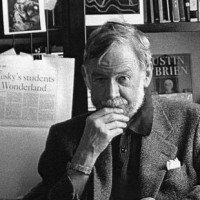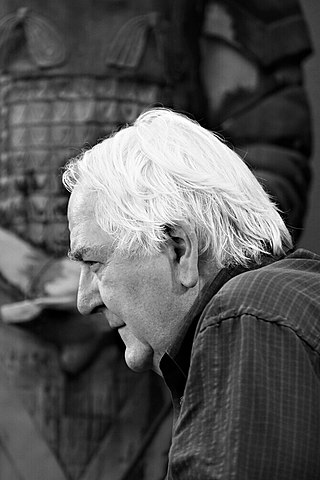The topic of this article may not meet Wikipedia's general notability guideline .(July 2023) |
Ivan Rijavec (born 1951) is an Australian architect.
The topic of this article may not meet Wikipedia's general notability guideline .(July 2023) |
Ivan Rijavec (born 1951) is an Australian architect.
Rijavec was born in Trnovo, PR Slovenia, at the time part of Yugoslavia, in 1951. When he was one year old, his family emigrated to Australia, settling in a coastal town of Albany, Western Australia.[ citation needed ]
Rijavec attributes his earliest architectural influence to the Italian structural engineer and architect Pier Luigi Nervi’s innovative work in concrete.[ citation needed ] He cites the spatial quality of Palazzo Dello Sport’s dome as having ignited his architectural interests when in 1968 he stumbled on a faded small black and white photograph of it in an engineering volume extolling the virtues of pre-cast concrete.[ citation needed ]
In 1969, Rijavec enrolled in architecture at Curtin University, Western Australia. [1] Whilst completing the first tier of the course, he won a bursary postponing his degree to undertake a study tour of Europe tracing the development of Western Civilisation through Greece, central and Western Europe. He remained in Europe for six years travelling, studying and working predominantly in London and Umeå, Sweden.[ citation needed ]
In 1977, Rijavec returned to Australia completing his bachelors and master's degrees at RMIT in 1979 and 1992.[ citation needed ] After a period working at Bates Smart, he was appointed associate director in 1985 and subsequent to his design role on the Coronial Services Centre was headhunted as a design leader at the Victorian Public Works Department. There he worked on a government initiative to raise Victorian design standards in the Justice and Tafe Groups before devoting himself exclusively to his own practice in 1988.[ citation needed ]
From the late 1980s till present, Rijavec Architects have had a prodigious output, receiving 10 professional awards and numerous other commendations for outstanding architecture. [2] Over the same period Rijavec taught at the RMIT University of Technology Department of Architecture and served on numerous professional advisory panels, competition and design juries. His architecture employs unique curvilinear geometries in the creation of forms and spaces that have been described as sculptural, intensely intimate and poetic. As the scale and breadth of his projects increased, his focus broadened to include Australian urbanism. Rijavec was included in Melbourne Masters Architecture exhibition held in November 2004 TarraWarra Museum of Art | Exhibitions that exhibited the works of some of Melbourne’s most celebrated architects.
In 2003, Rijavec assumed the role of architect-developer on a major inner urban development comprising an urban block in Melbourne’s oldest suburb, Fitzroy. The project, NKYA, (an acronym for Napier, Kerr, Young and Argyle Streets that border the site), comprised a mixed use development including cafes, offices and a predominance of apartments. It was the largest conceived in Fitzroy’s history prompting mass public protests.[ citation needed ]
The popular press dubbed it "the cheese grater" [3] (alluding to the distinctive conical forms of one of its corner elements). The complex was designed to provide 136 apartments in structures ranging between five and eight stories in height in three separate buildings of different architectural characters. Despite strong opposition by residents action groups and the Yarra City council, the project won approval at the Victorian Civil and Administrative Tribunal (VCAT).[ citation needed ] This was largely as a result of Rijavec establishing the project’s contextual relevance in an unprecedented appraisal of Fitzroy’s urban character that reinterpreted it as Urban Jazz.
"NOW+WHEN Australian Urbanism", inspired by Rijavec’s interest in Australian urbanism was selected as Australia’s 12th Venice Architecture Biennale exhibition for 2010. The exhibition co-directed by photographer John Gollings refocusses the Australian identity from the "outback", to its coastal urban centres where 93% of its population now lives. The exhibition comprises a survey of Australian Urbanism NOW and allegorical speculations on Australia’s Urban future, WHEN, set from 2050 into the distant future. The exhibition has been conceived as a time capsule of Australian Urbanism taken in 2010 that includes speculations on its urban future. [4]
This section of a biography of a living person does not include any references or sources .(January 2023) |
Denton Corker Marshall is an international architecture practice based in Melbourne, Australia.
Nonda Katsalidis is a Greek-Australian architect. He is currently a practising director of architecture firm Fender Katsalidis Architects in partnership with Karl Fender.
Sir Roy Burman Grounds was an Australian architect. His early work included buildings influenced by the Moderne movement of the 1930s, and his later buildings of the 1950s and 1960s, such as the National Gallery of Victoria and the adjacent Victorian Arts Centre, cemented his legacy as a leader in Australian architecture.

Dr Norman Kingwell Day is an architect, educator, and writer.
Philip J. Goad is an Australian academic, currently serving as Professor of Architecture in the Faculty of Architecture, Building and Planning at the University of Melbourne. He is also a former President of the Victorian Chapter of the Royal Australian Institute of Architects. Phillip became Chair of the Heritage Council of Victoria in July 2021.

Edmond and Corrigan is an Australian architectural firm based in Melbourne, Victoria, founded in the late 1970s by partners Maggie Edmond and Peter Corrigan, the firm's principals. The practice's work, both built and written, has been widely associated with the emergence of architectural postmodernism in Australia, an interest in suburbia and a search for an Australian architectural identity. Peter Corrigan taught design studios at RMIT University for over 30 years, until his death in December 2016.

Peter Russell Corrigan was an Australian architect and was involved in the completion of works in stage and set design.
John Wardle is a Melbourne-based architect. He graduated from the Royal Melbourne Institute of Technology with a degree in Architecture.

Daryl Sanders Jackson AO is an Australian architect and the owner of an international architecture firm, Jackson Architecture. Jackson also became an associate professor at University of Melbourne and Deakin University.

Peter McIntyre is an Australian architect and educator.
John Gollings AM, is an Australian architectural photographer working in the Asia Pacific region.
Kevin Borland was an Australian post-war Architect. Over his career his works evolved from an International Modernist stance into a Regionalist aesthetic for which he became most recognized. Many of his significant works were composed of raw materials and considered ‘Brutalist’ typifying Borland’s renowned motto ‘architecture is not for the faint-hearted’. Borland died in 2000 leaving a legacy of work throughout Victoria, New South Wales and Tasmania.

Dr. Graeme Cecil Gunn AM is an Australian architect and former Dean of the School of Architecture at RMIT.
Wood Marsh Architecture, styled Wood | Marsh Architecture, is a Melbourne-based Australian architectural practice founded by Roger Wood and Randal Marsh in 1983.
Philip Harmer is an Australian architect. He graduated from the University of Melbourne with a bachelor's degree in Architecture, and became a Fellow of the Royal Australian Institute of Architects (RAIA). Harmer has a strong appreciation for sculptural forms and spaces that are powerfully shaped or wrought; thus, his works display the cleverness of how certain materials and details are used to represent his individual persona.
Kerstin Thompson is an Australian architect, born in Melbourne in 1965. She is the principal of Kerstin Thompson Architects (KTA), a Melbourne-based architecture, landscape and urban design practice with projects in Australia and New Zealand. She is also Professor of Design at the School of Architecture at Victoria University of Wellington, New Zealand, and Adjunct Professor at RMIT University and Monash University.
Searle X Waldron is an Australian architecture firm based in St Kilda, Melbourne. It is an emerging firm co-founded by Nick Searle and Suzannah Waldron in 2007. The firm focuses on projects ranging from small scale residential to larger scale urban master-planning. Some of their notable projects and design competitions include the MoCAPE and Art Gallery of Ballarat Annexe which have managed to attain various awards from the Australian Institute of Architects, including the 2012 Colorbond Award for Steel Architecture and 2012 Architecture Award for Public Architecture Alteration & Additions. Their designs have been exhibited across Australia and throughout Asia and Europe.
Lovell Chen is an architectural practice and heritage consultancy founded by Peter Lovell and Kai Chen in Melbourne, Victoria, Australia. Founded in 1981 as Allom Lovell & Associates, the practice became Lovell Chen in 2005. They are known for their heritage, conservation and strategic planning work, and latterly for architecture. The practice Principals are Kai Chen, Kate Gray, Peter Lovell, Adam Mornement, Anne-Marie Treweeke, Milica Tumbas and Katherine White.
Suzanne Dance is a Melbourne-based architect who has spent over four decades focusing on architectural conservation and residential work in the inner suburbs of Melbourne. She has been a resident of Fitzroy since 1975 and for eight years she was secretary of the Historic Buildings Sub-Committee of Fitzroy Council's Urban Conservation Advisory Committee.
Dimity Reed AM is an architect, urbanist and academic. She has been involved in government advisory roles, as well as writing for both The Sun and The Age newspapers.